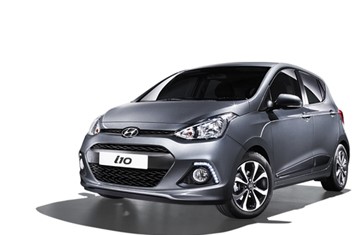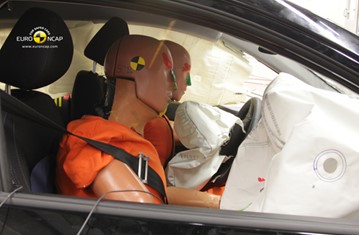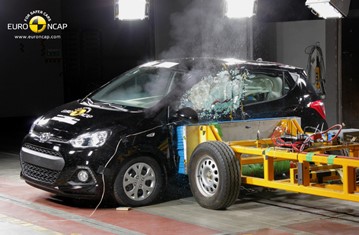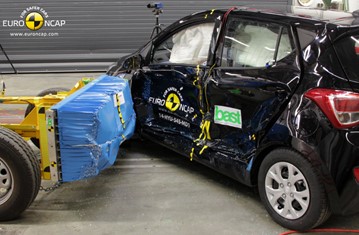Find more information in the General Comments section of the assessment
Find more information in the Rating Validity tab of the assessment
- See More
- See More
- See More
- See More
- Good
- Adequate
- Marginal
- Weak
- Poor
 Passenger
Passenger
 Driver
Driver
 Rear Seat
Rear Seat
 Front Seat
Front Seat
 Car
Car
 Pole
Pole
- Good
- Adequate
- Marginal
- Weak
- Poor


Passenger
outboard
center
Fitted to the vehicle as standard
Not fitted to the test vehicle but available as option
Not Available
-
Infants up to 13 kg
-
Infants and toddlers up to 18 kg
-
Toddlers from 9 to 18 kg
-
Toddlers over 18 kg
Easy
Difficult
Safety critical
Not allowed
| Seat Position | ||||
|---|---|---|---|---|
| Front | 2nd row | |||
| Passenger | Left | center | Right | |
| Maxi Cosi Cabriofix (Belt) | ||||
| Britax Römer King Plus (Belt) | ||||
| Britax Römer Duo Plus (ISOFIX) | ||||
| Britax Römer KidFix (Belt) | ||||
| Maxi Cosi Cabriofix & EasyFix (Belt) | ||||
| Maxi Cosi Cabriofix & EasyFix (ISOFIX) | ||||
| BeSafe iZi Kid X3 ISOfix (ISOFIX) | ||||
| Maxi Cosi Pearl & Familyfix (ISOFIX) | ||||
| Britax Römer KidFix (ISOFIX) | ||||
Easy
Difficult
Safety critical
Not allowed
Based on dummy readings in the dynamic tests, the i10 scored maximum points for its protection of the 1½ year infant. In the frontal impact, forward movement of the 3 year dummy, sat in a forward-facing restraint, was not excessive but chest loads indicated only fair protection of this body region and neck forces were also high. In the side impact, both dummies were properly contained within the protective shells of their restraints, minimising the risk of head contact with parts of the car interior. The passenger airbag can be disabled to allow a rearward-facing child restraint to be used in that seating position. The information provided to the driver regarding the status of the airbag is clear and the system was rewarded. All of the child restraints for which the car is designed could be properly accommodated and fitted in the i10.
- Good
- Adequate
- Marginal
- Weak
- Poor

Head Impact 16.0 Pts
Pelvis Impact 3.7 Pts
Leg Impact 6.0 Pts
The bumper provided good protection to pedestrians' legs in all areas tested and scored maximum points. Protection of the front edge of the bonnet was good at the centre but was poor towards the stiff outer edges. The bonnet surface and windscreen provided mostly good or adequate protection with poor results recorded only on the dtiff windscreen pillars.
- Good
- Adequate
- Marginal
- Weak
- Poor
| Speed Limitation Function | Manually Set |
| System Name | ESC | |
| Performance | ||
| Applies To | All seats | ||
| Warning | Driver Seat | Front Passenger(s) | Rear Passenger(s) |
| Visual | |||
| Audible | |||
|
|||
The i10 has a seatbelt reminder fitted as standard for the front and rear seats, and the system met Euro NCAP's requirements. Electronic stability control is also standard equipment. A driver-set speed limitation device is available as an option and is expected to be fitted to most cars sold. The system met Euro NCAP's requirements for speed assistance systems of this type.
- Specifications
- Safety Equipment
- Videos
- Rating Validity
Specifications
Tested Model Hyundai i10 1.0 petrol Comfort, LHD
Body Type - 5 door hatchback
Year Of Publication 2014
Kerb Weight 933kg
VIN From Which Rating Applies - applies to all Hyundai i10s of the specification tested
Class City and Supermini
Safety Equipment
Note: Other equipment may be available on the vehicle but was not considered in the test year.
Fitted to the vehicle as standard
Fitted to the vehicle as option
Not fitted to the test vehicle but available as option
Not Available
Not Applicable
Videos
Rating Validity








Find more information in the General Comments section of the assessment
 Share
Share










The passenger compartment remained stable in the frontal impact. Dummy readings indicated good protection of the knees and femurs of the driver and passenger. Hyundai showed that a similar level of protection is provided to occupants of different statures or those sat in a different position. In the side barrier test, the dummy readings showed good protection of all body regions. However, inspection of the car after the crash revealed that the rear door on the struck side was not fully latched. Analysis of the high speed film indicated that the handle lifted in the crash, owing to inertia, and that this may have partially unlatched the door. Protection of the chest in the side pole impact was rated as marginal, based on dummy readings of rib compression. The protection offered by the front seats against whiplash injury in a rear-impact was good but a geometric assessment of the rear head restraints revealed marginal protection.